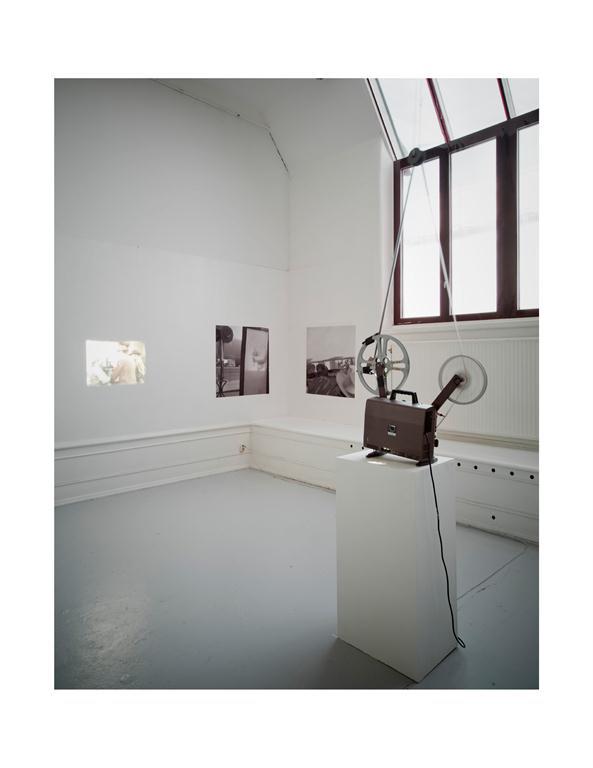From planting a raspberry garden in a New York gallery to creating massive light projections on Montreal buildings, the works of the five artists shortlisted for this year’s Sobey Art Award are notable in range and gesture.
This fall, on October 9, one of them will win $50,000 for their practice, with $5,000 going to each of the four runners-up.
The shortlist—announced yesterday in Halifax and structured as one artist per region—consists of Isabelle Pauwels (West Coast and the Yukon), Mark Clintberg (Prairies and the North), Duane Linklater (Ontario), Pascal Grandmaison (Quebec) and Tamara Henderson (Atlantic).
The shortlist is winnowed down from a longlist of 25 that was released in late April. Regional affiliations seem to be based on either region of birth or region of residence—for instance, Clintberg is based in Montreal but was born in Alberta, while Henderson is based in Vancouver but was born in New Brunswick.
Each artist has a distinctive practice that has won them increasing accolades at home and abroad.
Duane Linklater—he of the raspberry garden in the New York gallery—has had a banner year. The Cree artist collaborated with Brian Jungen on a work for Documenta 13 (the project is currently on view at Catriona Jeffries in Vancouver) and was featured at Toronto’s Images Festival, and he will soon show at Toronto’s Susan Hobbs Gallery in an exhibition curated by Althea Thauberger. In the Spring 2013 issue of Canadian Art, Vancouver critic Clint Burnham called him “the Julian Assange of Native art,” in part for a work that attempted to intervene in the Wikipedia entry for Cape Spear.
Tamara Henderson recently returned to Canada after several years working and studying in Germany and Sweden. She too exhibited at Documenta 13 and has participated in residencies at the Paul Klee Centre in Switzerland and the Center for Contemporary Art Research in Japan. Currently, she specializes in recordings of the unconscious that follow a dreamlike structure; in a February review for our site, Vancouver author Michael Turner described Henderson’s film Neon Figure as having “a surreal, Felliniesque quality,” particularly given that it was exhibited next to another work by Henderson, Pacific Peace, that showed clothing laid out on a chaise longue. Henderson’s collaborative works with Julia Feyrer are currently on view at the Walter Phillips Gallery in Banff.
Pascal Grandmaison has been recognized for several years in the Montreal art scene, where he is based, as well as nationally. In 2006, he received a solo show at the Musée d’art contemporain de Montréal, and in 2012, he created a series of nighttime projections on downtown buildings that were linked together by a downloadable audio track. (A film showing parts of this work can be found in our December post about the project.) In 2011, Grandmaison’s work was also exhibited in a solo show at Casino Luxembourg—his first solo exhibition in Europe. His photographs of people holding panes of glass were also included in the inaugural Canadian Biennial at the National Gallery in 2010.
Isabelle Pauwels, born in Belgium, is based in New Westminster. Her films and installations often raise issues of narrative reliability; for instance, her 2010 installation W.E.S.T.E.R.N. integrated home-movie footage her grandfather shot in the Congo with video Pauwels shot in her parents’ Richmond home. The film element, as Sara Mameni reported in the Fall 2010 issue of Canadian Art, was exhibited in a hut structure, with the work contextualizing “personal family history within parallel, and often problematic, narratives from popular culture.” More recently, Pauwels created a film at Western Front that, as Michael Turner reported for our site, “wove the demands of a teenage girl’s club, the exploits of a latex-clad dominatrix, the 1970s-era personae of three Western Front artist-landlords (Hank Bull, Glenn Lewis and Eric Metcalfe) and the building’s architecture into a harrowing tale of identity, inclusion and constraint.” She is due to have a solo show at CSA Space this year.
Mark Clintberg has distinguished himself as an art historian, critic and curator as well as being an artist, and much of his work has reflected a sensitivity to the written word and its meanings. In his 2011 work My Debt, he exhibited handwritten thank-you letters he had penned to artists, institutions and others he felt he was indebted to. In 2012, he installed a large barn-board wall at the Art Gallery of Alberta painted with the words “Behind This Lies My True Desire for You.” As he told Canadian Art in an interview related to that project, “Since I’m also pursuing a PhD in art history, it’s very easy to fall into a pattern of considering art from an analytic, thoughtful perspective that is built around proving something or demonstrating an argument that’s purely about reason. I really believe that art institutions are places for reason and for thinking, but they are also places for feeling, too—for passionate feeling.” Clintberg will be in residence in Fogo Island, Newfoundland, this summer, and will exhibit at Western Front this summer as well.
An exhibition of work by these shortlisted artists will open September 13 at the Art Gallery of Nova Scotia.
The jury that decided both the shortlist and longlist consists of Mireille Eagan, curator of Canadian art, the Rooms; Marie-Claude Landry, curator of contemporary art, Musée d’art de Joliette; Melissa Bennett, curator of contemporary art, Art Gallery of Hamilton; Jesse McKee, curator, Walter Phillips Gallery; and Charo Neville, curator, Kamloops Art Gallery.









